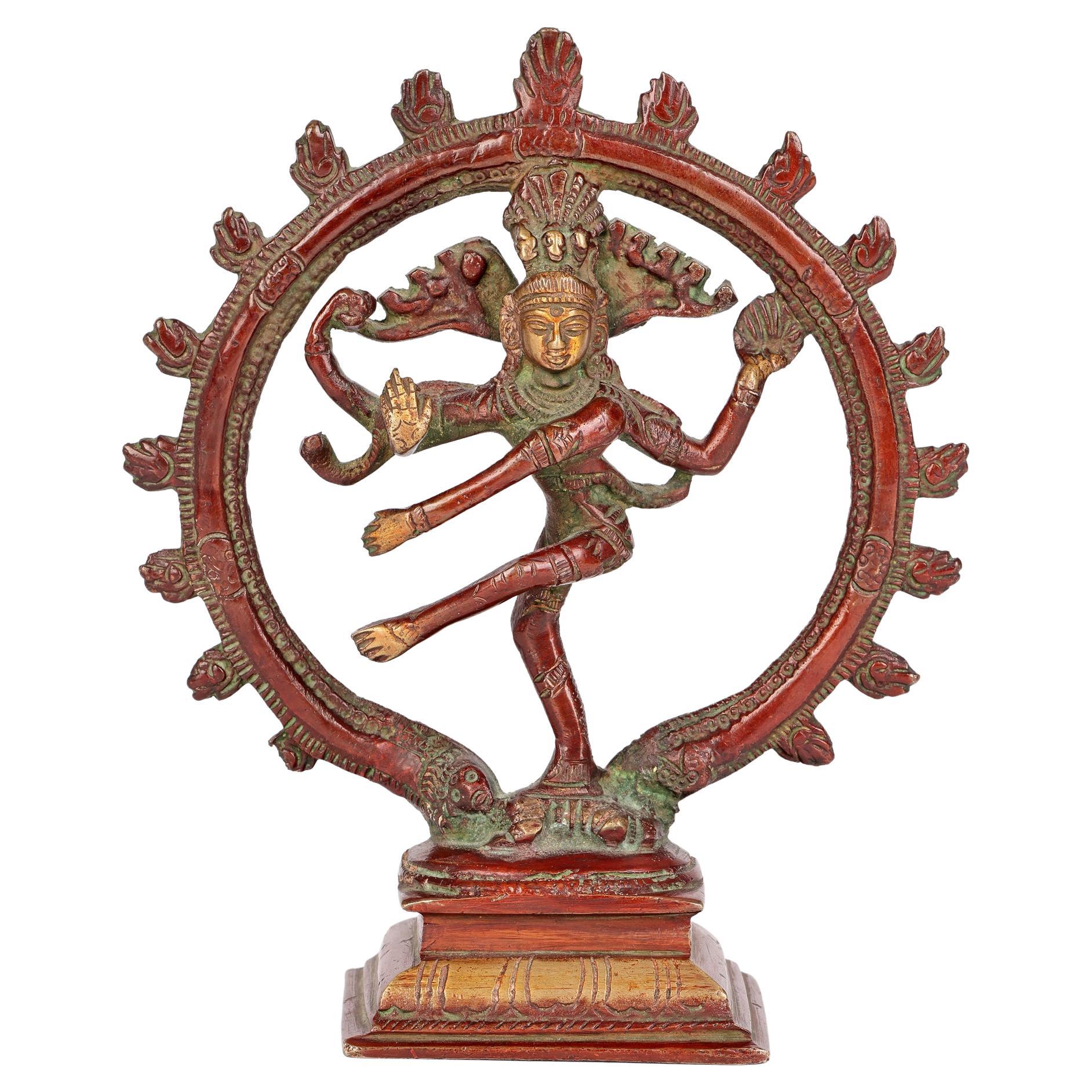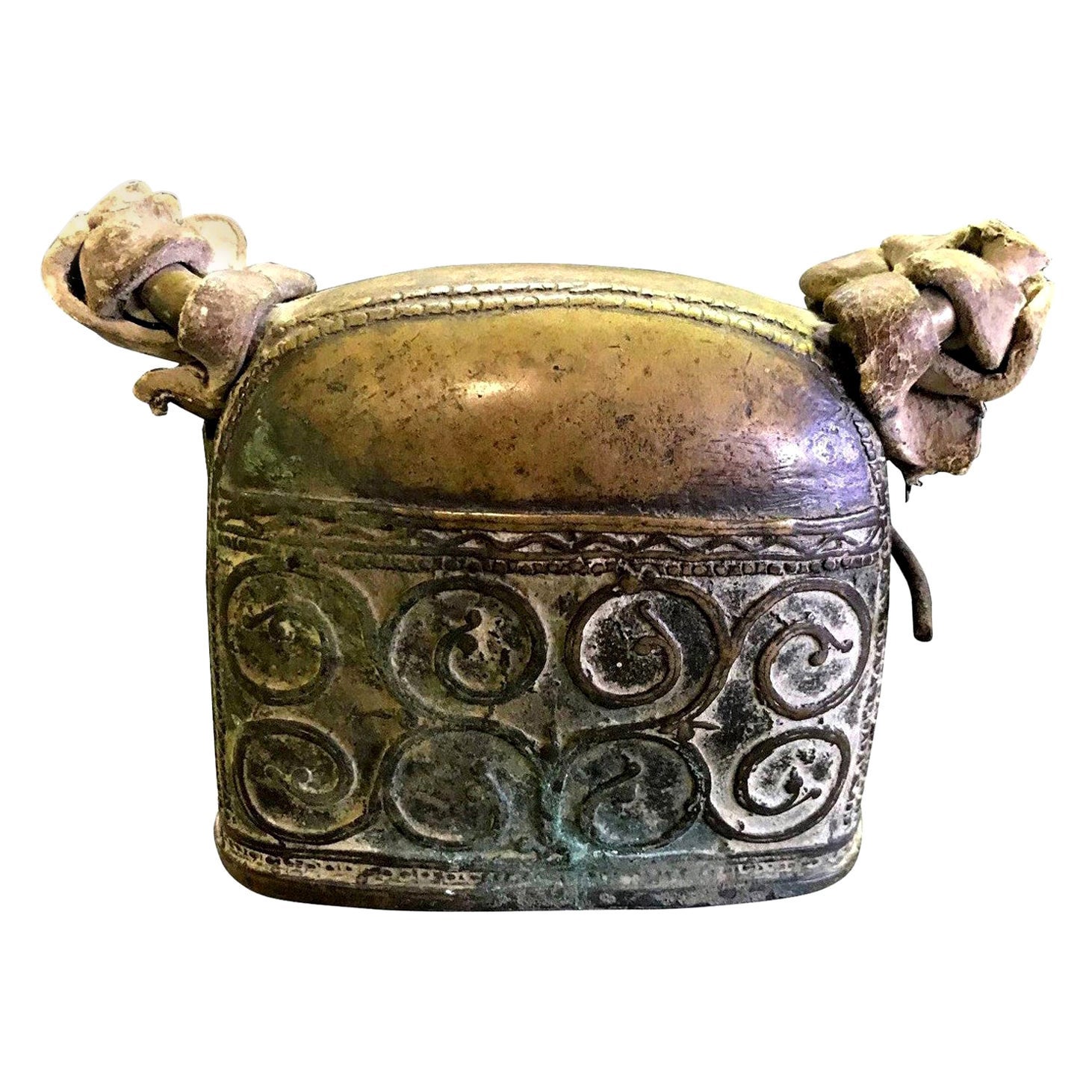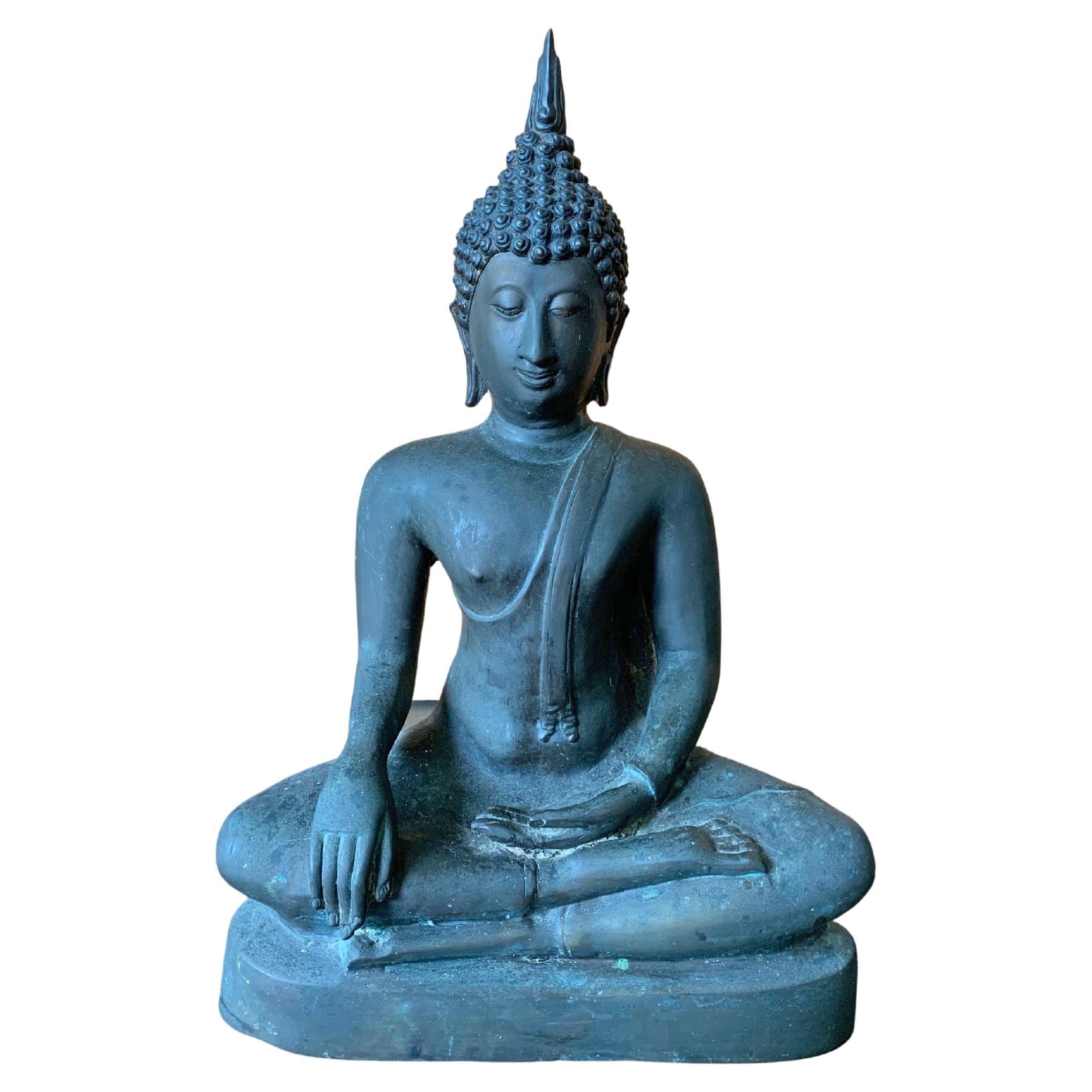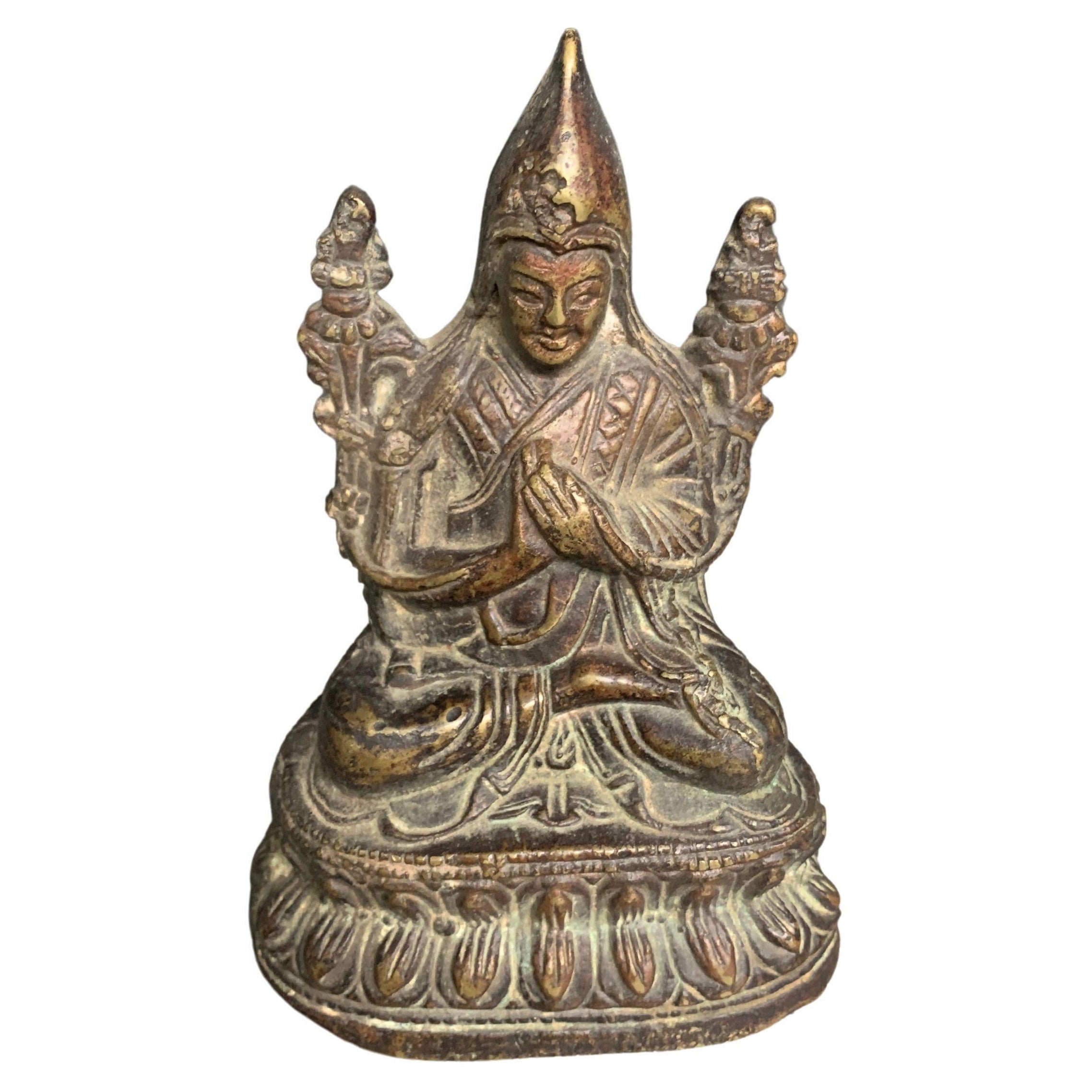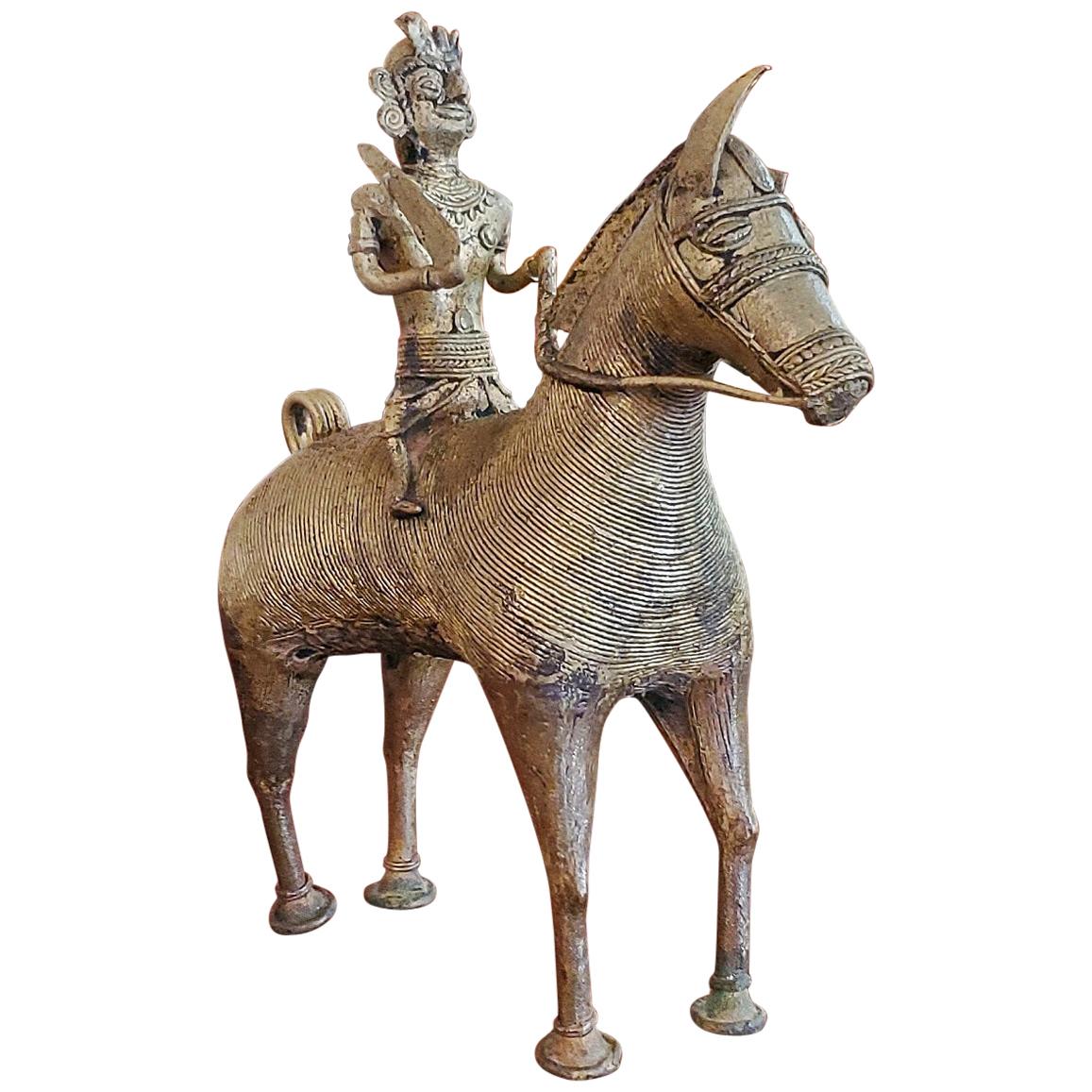Items Similar to Indian Mythological Bronze Palanquin Finials
Want more images or videos?
Request additional images or videos from the seller
1 of 5
Indian Mythological Bronze Palanquin Finials
About the Item
Beautifully stylized and crafted in the form of protective mythological creatures are these exceptional 18th-century Indian bronze palanquin finials. Palanquin, or “palki”, are litter-type conveyances that have been in use in India for centuries. These finials would have adorned the pole ends that were used to support and carry the passenger compartment.
The word “palanquin” is derived from the Sanskrit “palanki” meaning “bed” or “couch”. These lushly covered conveyances were intended to be carried by four to eight bearers known as “behara”, “dulia”, “boyee” or “behara” depending on the region. The interiors were furnished with specialized bedding materials, including pillows to provide the utmost comfort while traveling. Though the earliest mention of palanquin dates to the 3rd century BCE in the epic poem Ramayana, the height of usage occurred during the Mughal era from the 16th through 19th centuries. It wasn't until the advent of railways and roadways that could accommodate wheeled modes of transportation that the use of palanquin fell out of favor. Today, these bygone conveyances are used in ceremonies such as weddings.
The ornamentation and complexity palanquin was directly related to social status. The finials also abided by this convention, but these adornments also reflected whether the owner was male or female. Flowers, particularly lotuses, and birds were the typical forms found on women’s palanquin, while those for men often featured fierce animals and creatures from Indian mythology and folklore.
Similar palanquin finials can be found in the collections of the Victoria & Albert Museum in London and New York's Metropolitan Museum of Art. The Heritage Transport Museum in Taoru, India has an entire exhibit devoted to palanquin with varied finials on display.
18th century
Measures: 10 1/4" length x 7" wide x 4 1/2" high.
- Dimensions:Height: 4.5 in (11.43 cm)Width: 7 in (17.78 cm)Depth: 10.25 in (26.04 cm)
- Sold As:Set of 2
- Style:Other (In the Style Of)
- Materials and Techniques:
- Place of Origin:
- Period:
- Date of Manufacture:18th Century
- Condition:
- Seller Location:New Orleans, LA
- Reference Number:
About the Seller
5.0
Recognized Seller
These prestigious sellers are industry leaders and represent the highest echelon for item quality and design.
Established in 1912
1stDibs seller since 2010
92 sales on 1stDibs
Typical response time: 6 hours
- ShippingRetrieving quote...Ships From: New Orleans, LA
- Return PolicyA return for this item may be initiated within 7 days of delivery.
More From This SellerView All
- Chinese Coconut CupLocated in New Orleans, LACarved from the shell of a coconut, this enchanting Chinese cup exhibits exceptional artistry. An elegant floral design encircles the entire cup, while the interior is fully lined with silver. In addition to the poison detecting powers attributed to coconuts, the Chinese believed that silver would tarnish when in contact with poison. In fact, many wealthy Chinese used silver lined cups and chopsticks tipped with silver fittings as an assurance against poisoning. To find a silver-lined coconut cup...Category
Antique Early 19th Century Chinese Other Sculptures and Carvings
MaterialsCoconut
- Jade Hanging VaseLocated in New Orleans, LAThis rare Chinese hanging vase, carved of fine moss-in-snow jade, boasts a host of dragons, the most potent symbols of good fortune in China. Its intricat...Category
20th Century Chinese Other Sculptures and Carvings
MaterialsJade
- Chinese Export Silver Bowl and SpoonLocated in New Orleans, LAThis delightful and extremely rare spoon and bowl pair exemplifies the remarkable artistry of Chinese export silver. Chinese silver pieces are renowned for their exceptional quality and unique designs, and the majority are entirely hand crafted. Today, many of these elaborate designs are housed in major museum collections, and remain a rarity on the market. Beginning in the 18th century, silver workshops in China specialized in the manufacture of silver export pieces for Western audiences. Typically bearing motifs that were popular amongst Americans and Europeans such as dragons, bamboo and floral patterns, these charming pieces were all beautifully handcrafted with the utmost skill. Today, important pieces of Chinese export silver such as this one can be found in many of the major museum collections, and are highly valued amongst collectors. The bowl boasts a fluid, undulating rim exquisitely engraved to depict bamboo, a motif which continues throughout the bowls body. Accompanying the bowl is a matching silver spoon, its handle intricately modeled as a vine with floral buds climbing upwards to its bowl, which seems to bloom with lovely applied buds and flowers. The spoon features the mark of Wing Fat, a firm active in Hong Kong from 1875-1930 and Sing Fat...Category
Early 20th Century Chinese Chinese Export Serving Pieces
MaterialsSilver
- Meiji Period Japanese Silver CenserLocated in New Orleans, LAThis stunning Meiji period silver censer is a work of exquisite detail. Crafted by renowned silversmith Masatoshi of Tokyo, the censer, or incense burner...Category
20th Century Japanese Meiji Metalwork
MaterialsSilver
- Indian Arivalmanai Culinary Cutting ToolLocated in New Orleans, LAOriginating from the Kerala region of Southern India, this 19th century arivalmanai, or culinary cutting instrument, is a traditional tool used in the preparation of vegetables throughout India. Comprising an engraved steel blade mounted upon a carved wood base, the user would place their weight on the wooden base by either sitting or kneeling, and prepare their ingredients accordingly. The craftsmanship and size of this fascinating relic denotes its usage in a Hindu temple setting, as offering food to the deities is believed to direct the mind towards spirituality. Food plays an important role in Hindu worship, and because of the veneration of the cow and belief in non-violence, most followers follow a vegetarian diet. The vast majority of Hindu religious...Category
Antique 19th Century Indian Other Butcher Blocks
MaterialsSteel
- Vienna Bronze Walrus InkwellLocated in New Orleans, LAWonderfully charming and boasting a high level of detail, this bronze walrus also serves as an inkwell. The incredible artistry of Viennese bronze work i...Category
Antique Late 19th Century Austrian Other Inkwells
MaterialsBronze
You May Also Like
- Indian Asian Lacquered Bronze Dancing Hindu Shiva NatarajaLocated in Bishop's Stortford, HertfordshireA fine and unusual vintage Asian Indian red lacquered bronze statue of Shiva Nataraja dating from the 20th century. The figure represents the Hindu God Shiva performing a dance. The ...Category
20th Century Indian Anglo-Indian Metalwork
MaterialsBronze
- 19th Century Asian or Indian Primitive Bronze Cow Bell Original Leather StrapsLocated in Studio City, CAA fantastic Primitive piece. Hefty and well detailed with clear signs of age and use. Nice patina. Appears to have original leather straps. Likely from India or Southeast Asia. ...Category
Antique 19th Century Asian Primitive Metalwork
MaterialsBronze
- Thai Chiang Saen Buddha from Bronze, c. 1950Located in Jimbaran, BaliThis bronze Chiang Saen seated Buddha from Thailand dates to the mid-20th century. The Buddha features traditional Thai attire and detailing. As well as it...Category
Mid-20th Century Thai Other Metalwork
MaterialsBronze
- Small Tibetan Seated Buddha from Bronze, c. 1850Located in Jimbaran, BaliA wonderful Tibetan bronze seated buddha on a lotus pedestal from the 19th century. This buddha features a lovely age related patina as well as rich detailing.Category
Antique 19th Century Tibetan Other Metalwork
MaterialsBronze
- Antique Mythical Tiger Finial Bronze Palanquin Handle 18-19th CenturyLocated in North Hollywood, CAAntique 18th 19th Century Palanquin Mythical Lion or Tiger Finial Bronze Handle. Large heavy Indian Mythological bronze palanquin fitting cast via the lost wax technique, beautifully stylized and crafted in the form of protective mythological creature. Palanquin finials were used to adorn the pole ends of the palanquin or palki. A fine and massive example of a palanquin pole finial with good detail and fine patina. India, circa: 18th/19thc. The Palanquin handle...Category
Antique 19th Century Indian Folk Art Metalwork
MaterialsBronze
- Antique Indian Dhokra Horse and Rider SculptureLocated in Dallas, TXPresenting a lovely antique Indian Dhokra horse and rider sculpture. Probably from the late 19th or early 20th century as is evidenced by its natural patina and clear evidence of age. It depicts an Indian Warrior with a sword in his right hand mounted on his horse/steed. The warrior is in classical and ancient Southeast Asian Indian attire and he holds the horse’s reins in his left hand. The body of the horse is a series of lines (in the Classic Dhokra Style) and it has a tribal headdress...Category
Antique Late 19th Century Indian Anglo Raj Metalwork
MaterialsMetal
